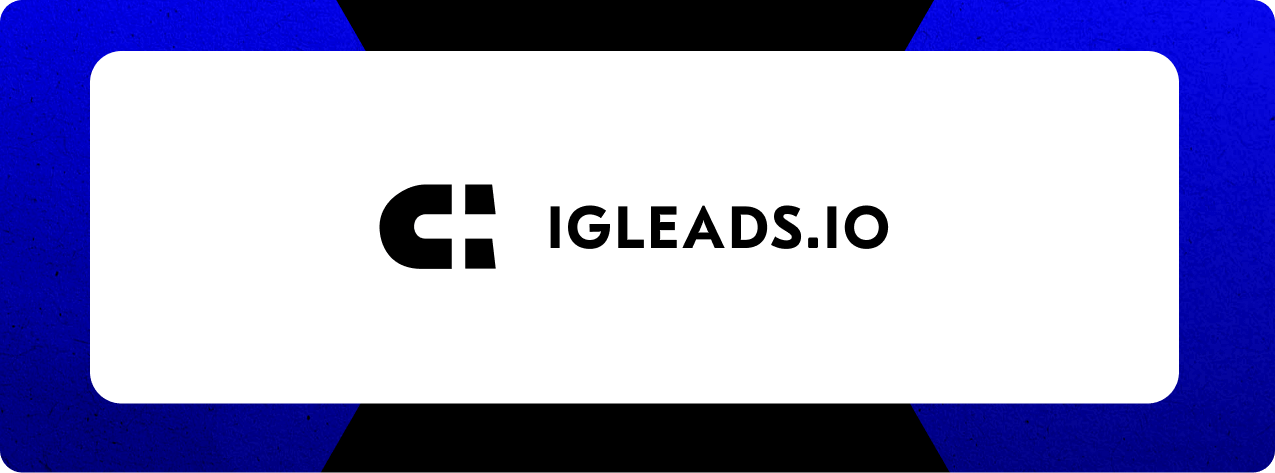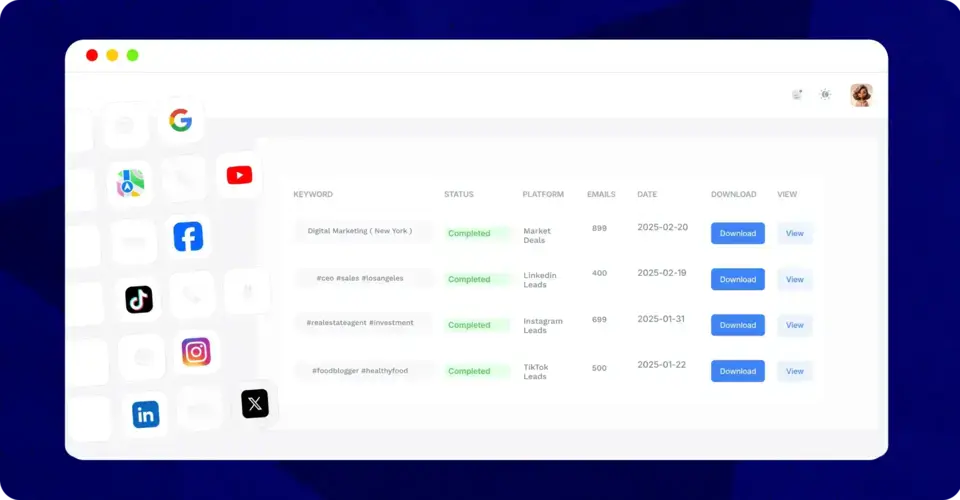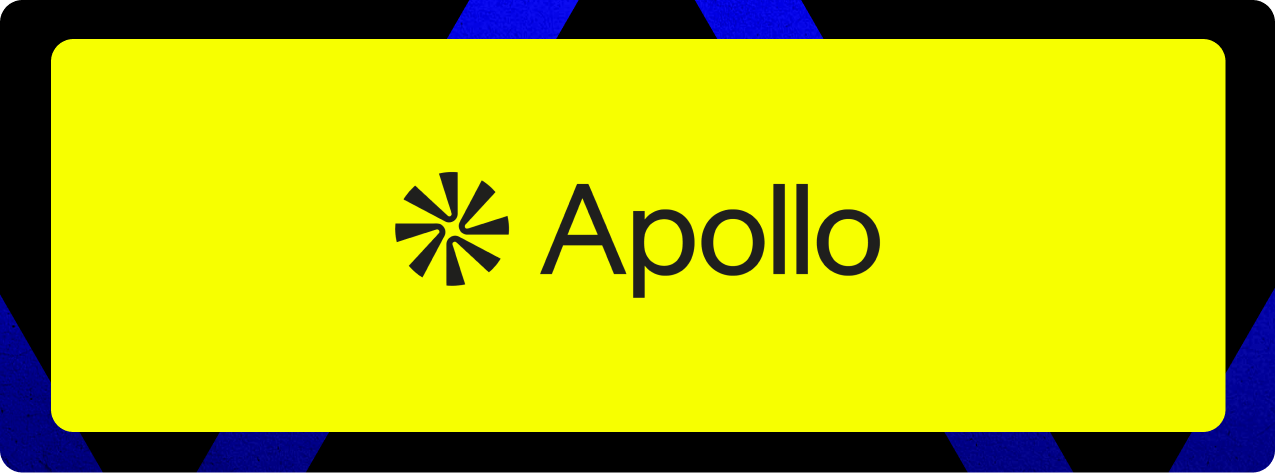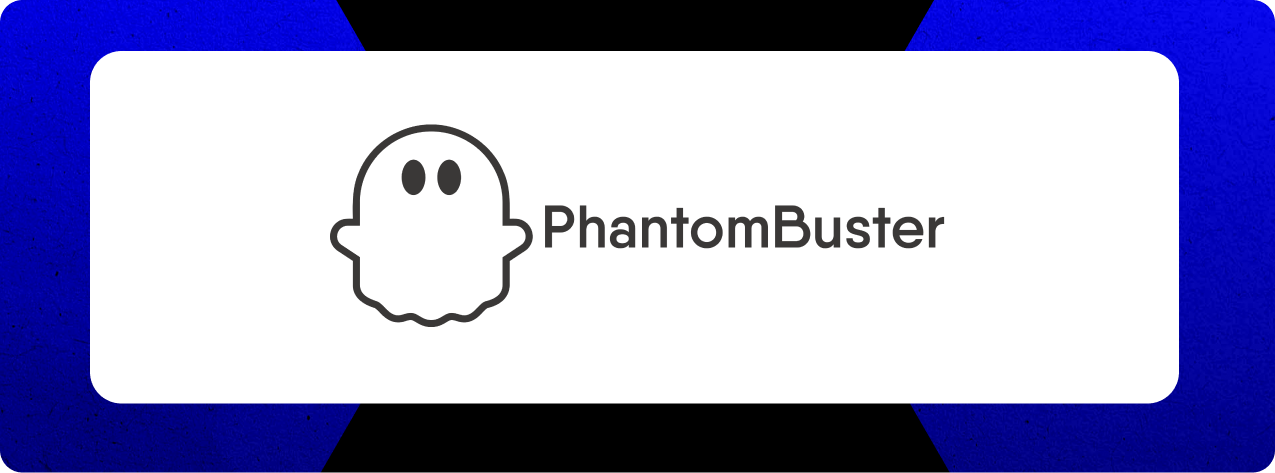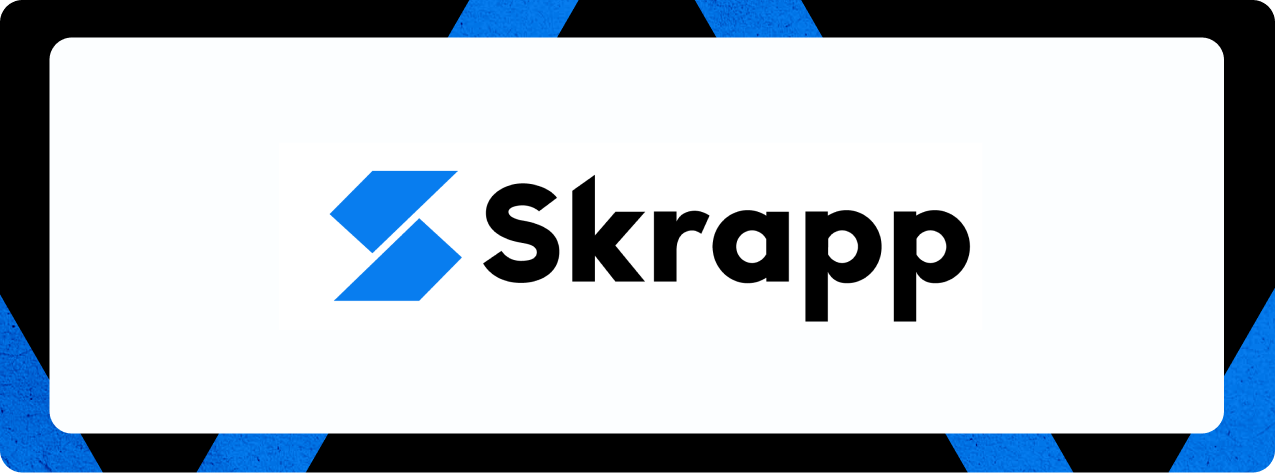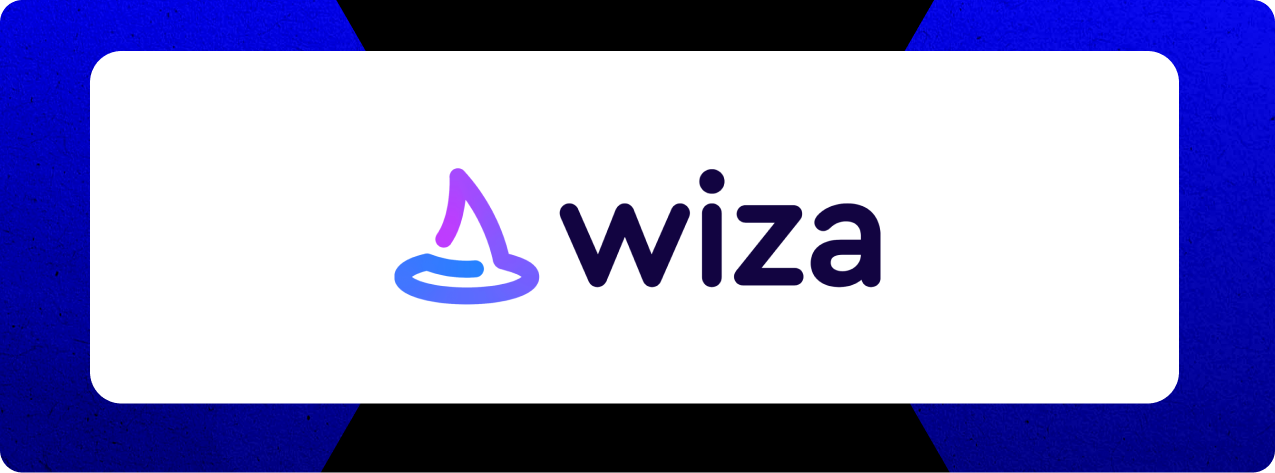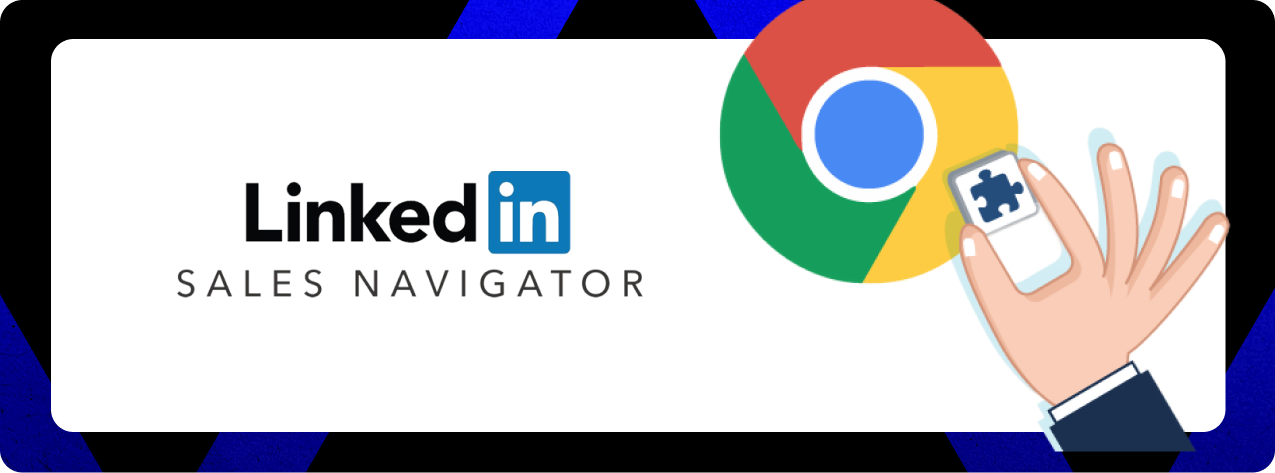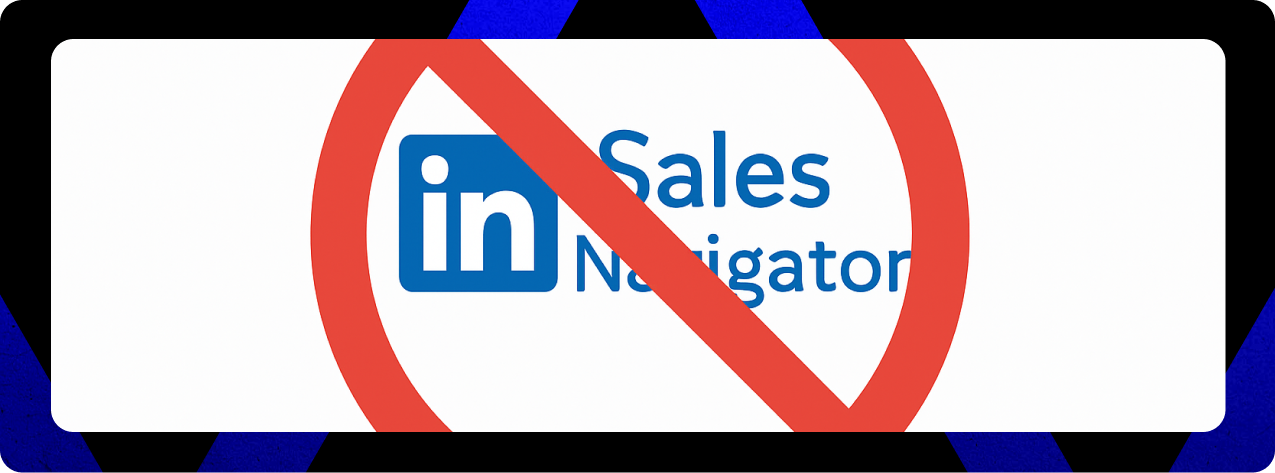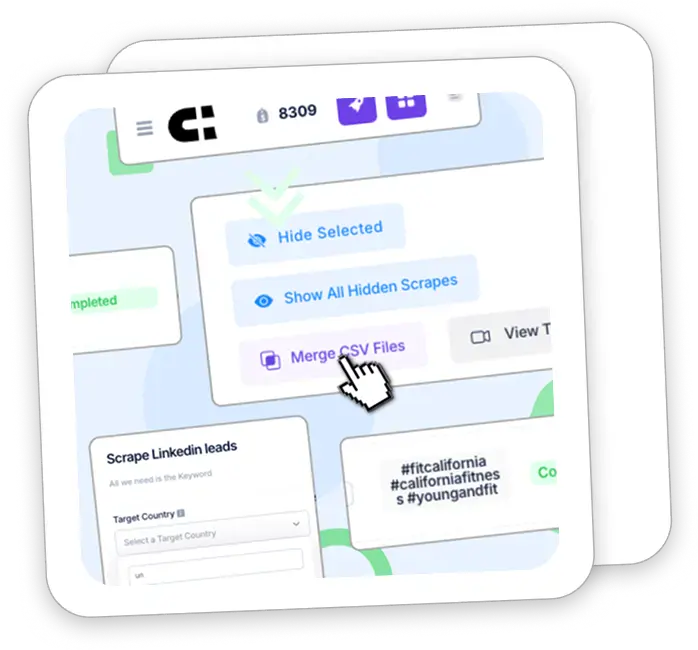How to Scrape LinkedIn Emails in 2025: Tools & Guide
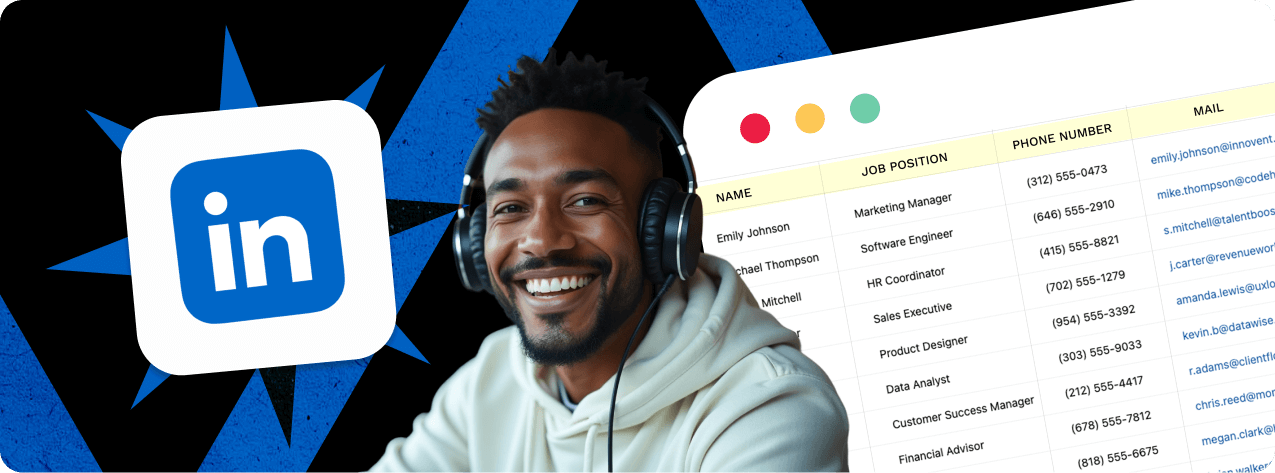
Want to pull LinkedIn emails in 2025? You’ve got two main paths: manually sift through profiles and exports, or use a LinkedIn email scraper that automates the process.
Modern scraping tools now process tens of thousands of LinkedIn profiles per day. That’s a game changer for recruiters, sales teams, and B2B marketers. Some tools enrich profiles using third-party databases, while others rely on clever prompts and scraping techniques to extract public contact data without needing a connection.
If you’re trying to build prospect lists, grow your agency, or run outbound campaigns, scraping LinkedIn emails can save hundreds of hours. And when done right, email outreach is still one of the best-converting channels in the B2B space.
This guide walks you through both approaches, manual and automated, and covers the tools, techniques, risks, and best practices to help you stay compliant and effective.
Let’s get into it.
Understanding LinkedIn email scraping
Before we dive into the tools, here’s what LinkedIn email scraping actually means, and why it’s useful for lead generation, recruiting, and B2B growth.
What is LinkedIn email scraping?
LinkedIn email scraping refers to collecting email addresses and related contact data from public LinkedIn profiles using automated tools or manual methods. These scrapers scan profiles, pull contact fields (when visible), and often use enrichment techniques to guess or source professional emails based on name, company, and domain.
While some tools work within LinkedIn’s own interface, others pull data from exported CSVs, company pages, or third-party platforms connected to LinkedIn. The most advanced options use AI prompts or API access to automate the process.
Here’s what scrapers can usually extract:
- Public emails (if listed)
- Name and company
- Job title and location
- Profile URLs and photos
- Other social handles or websites
- Estimated work email addresses based on domain patterns
Important: Scraping should only use public or business-intended information. Attempting to access private data, circumvent platform protections, or store personal details without consent may violate LinkedIn’s Terms of Service, GDPR, and other privacy laws.
Types of LinkedIn scrapers
Not all scrapers work the same. Here’s a breakdown of the main categories:
- Basic tools – Scrape visible emails from LinkedIn profiles or exports
- Enrichment-based – Combine names and companies with domain guesswork (e.g. first.last@company.com)
- AI scrapers – Use prompts to pull emails based on behavior, patterns, or platform logic
- Automation platforms – Chain actions like connection requests, exports, and enrichment across thousands of leads
Coming up next: the top tools for scraping LinkedIn emails in 2025, including pricing, pros and cons, and best use cases.
Top 5 LinkedIn email scraping tools in 2025
Several standout tools have emerged as the best LinkedIn scraping tools in 2025. I’ve tested dozens, and these five are among the most reliable and effective, whether you’re building a lead list or enriching CRM data. Here’s a side-by-side look at what each one offers:
| Feature |  |
 |
 |
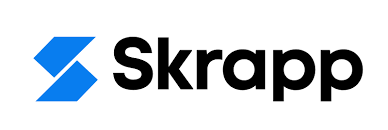 |
 |
|---|---|---|---|---|---|
| Key features | • No login needed • Keyword and job title search • Simple UI • Multi-platform scraping |
• LinkedIn email finder • CRM and sequence tools • Database + enrichment |
• LinkedIn automation templates • Profile scraper • CSV/JSON export • Session-based login |
• Chrome extension • LinkedIn profile enrichment • Domain pattern guessing |
• Works with Sales Navigator • One-click email finding • CSV-ready output |
| Pros | • No proxy or login setup • Fast and beginner-friendly • Affordable |
• Large contact database • Email enrichment • Outreach tools included |
• Custom automation flows • Scales across lists • Export in multiple formats |
• Lightweight and simple • Good for solo users |
• Clean UI • Quick exports • Good match rates |
| Cons | • Basic filtering • Not ideal for deep targeting |
• Expensive for small teams • Overkill for basic scraping |
• Requires LinkedIn session cookie • Account throttling possible |
• Guess-based emails • No bulk scraping |
• Requires Sales Navigator • Email quality varies |
| Starting price | $59.99/month | Free tier, paid from $49/month | $69/month | Free plan, paid from $39/month | Free trial, paid from $59/month |
1. IGLeads – Keyword-based email scraper
IGLeads makes it easy to extract LinkedIn emails using keyword and job title searches. There’s no need to log into LinkedIn, install extensions, or manage proxies. Instead, you just enter a keyword like real estate agent or SaaS founder, choose how many leads you want, and the tool does the rest.
You can use job titles, industries, or niche terms to build lead lists without connecting to any accounts. This keeps the process simple, especially for freelancers and small teams who don’t want to deal with login issues or session cookies.
Key highlights:
- No LinkedIn login or account needed
- Keyword-based scraping
- Email extraction from public-facing LinkedIn data
- No browser extension required
- Multi-platform support (Twitter, Facebook, TikTok, LinkedIn)
Pricing:
- Starter – $59.99/month for 10,000 leads
- Business – $149.99/month for unlimited scraping across platforms
You’ll get export-ready CSV files that are already deduplicated and formatted, which makes them easy to upload into outreach tools or CRMs.
2. Apollo.io – Full-featured LinkedIn email extraction and outreach
Apollo.io is one of the most complete sales intelligence platforms in the market. Beyond scraping, it offers a full workflow, from lead discovery to CRM sync to multichannel outreach. If you’re looking to pull emails from LinkedIn profiles, Apollo combines scraping with enrichment using a massive internal database.
You can search directly within Apollo using job titles, industries, seniority, or company filters. Once you’ve found your targets, Apollo enriches the contact data using company domains and internal signals to surface email addresses. It also integrates directly with LinkedIn through a Chrome extension, so you can pull data while browsing profiles.
The platform supports bulk exports, sequences, call tasks, and more, ideal for sales teams and agencies looking to centralize their prospecting process.
Key highlights:
- Built-in LinkedIn Chrome extension
- Email extraction with enrichment via company domains
- Advanced lead filters and targeting
- CRM sync and cold email tools included
- Large contact database (275M+ profiles)
Pricing:
- Free – Limited email credits, no sequences
- Basic – From $49/month with increased credits and list access
- Professional – $99/month adds automation and calling tools
- Organization – Custom plans for team workflows and outreach scaling
Apollo.io is best for teams that want scraping and outreach in one place, with stronger filtering options than most lightweight tools.
3. PhantomBuster – Custom LinkedIn scraping with automation templates
PhantomBuster gives you full control over LinkedIn scraping with plug-and-play automation scripts called “Phantoms.” Whether you want to extract emails from a list of profile URLs or collect data from search results, PhantomBuster offers a library of tools to make it happen, no coding required.
The most popular LinkedIn Phantoms include the Profile Scraper, Search Export, and Network Booster. You can also combine them into multi-step workflows that scrape, enrich, and export contact details automatically.
PhantomBuster requires your LinkedIn session cookie to run, which means it acts on your behalf through the browser, helpful for personalizing data pulls, but riskier if overused.
Key highlights:
- Modular “Phantoms” for every LinkedIn action
- Chrome extension captures your session cookie
- Export data as CSV or JSON
- Automate scraping, messaging, and enrichment
- Chain actions into full workflows
Pricing:
- Free trial – 2 hours/day of execution
- Starter – $69/month for 5 slots, 10 min/task
- Pro – $159/month with more slots and task time
- Team – $439/month with multi-user support
PhantomBuster is ideal if you want automation flexibility and aren’t afraid to tinker, but it comes with a steeper learning curve and some scraping risk if you don’t pace tasks carefully.
4. Skrapp – Lightweight LinkedIn email extractor
Skrapp is a simple, browser-based LinkedIn email scraper that’s great for solo users or small teams. It uses a Chrome extension to pull contact information directly from LinkedIn and Sales Navigator, then guesses work emails based on common domain patterns like first.last@company.com.
While it doesn’t run large automations or workflows, Skrapp is fast, easy to use, and works well for targeted outreach campaigns. You can build lead lists on the fly while browsing LinkedIn, then export your data to CSV and connect it to CRMs like HubSpot or Pipedrive.
It’s a good option if you need fast contact enrichment and don’t want to pay for heavy tools like Apollo.
Key highlights:
- Chrome extension for LinkedIn and Sales Navigator
- Email guesser based on company domain patterns
- Profile saving and list building in-browser
- CSV export and CRM integrations
- No complicated setup or login risks
Pricing:
- Free plan – 150 email credits/month
- Starter – $39/month for 1,000 credits
- Seeker – $69/month for 5,000 credits
- Enterprise – $229/month for 50,000 credits
Skrapp works best when you already know your target companies or job titles, just browse, click, and download your leads.
5. Wiza – One-click emails from LinkedIn Sales Navigator
Wiza is built specifically to extract emails from LinkedIn Sales Navigator search results. Instead of copying and pasting profiles one by one, Wiza lets you select a list in Sales Nav, click “Export with Wiza,” and receive a spreadsheet with names, job titles, companies, and emails in minutes.
The platform uses real-time enrichment to match names and company domains, generating likely email addresses and scoring their confidence. It also checks for hard bounces and flags risky addresses before you send.
Wiza doesn’t require any coding or automation setup, which makes it ideal for recruiters, SDRs, and marketers running targeted outreach.
Key highlights:
- Integrates directly with Sales Navigator
- One-click email finding for full lead lists
- Email verification and bounce filtering
- Confidence scoring for each contact
- CSV export and CRM integrations
Pricing:
- Free trial – Limited exports and preview-only email results
- Basic – $59/month for 100 email credits
- Pro – $99/month for 300 credits + team sharing
- Enterprise – Custom pricing for bulk exports and API access
Wiza is a smart choice if you’re already using Sales Navigator and want a no-fuss way to turn searches into email lists, fast.
Manual vs. automated methods
When it comes to collecting LinkedIn emails, your approach depends on volume, targeting, and how much time you’re willing to spend. Manual methods can work for smaller outreach campaigns, while automated tools become essential for scaling lead generation.
How to manually find emails on LinkedIn
Manual extraction is still effective for niche outreach or one-on-one prospecting. LinkedIn hides most emails by default, but you can often uncover them using these tactics:
- Check the “Contact Info” section – Some users list their email addresses publicly if you’re connected.
- Look in featured links or posts – Personal websites, Calendly links, and portfolio pages often contain emails.
- Google operators – Try
site:linkedin.com/in "founder" "contact@"or include a company name and “email” to surface indexed profiles. - Use Hunter or similar tools – Combine a person’s name and company to guess likely email formats manually.
This method is low-cost and high-precision, but it’s time-consuming. You’ll usually collect only 5–15 usable emails per hour, depending on the niche.
When to use a LinkedIn email extractor
Automated scraping tools become necessary when:
- You need hundreds or thousands of contacts quickly
- You want to export full lead lists from Sales Navigator or search results
- You’re enriching data for cold email campaigns or CRMs
- You need more than just names, like job titles, companies, and locations
Scrapers like Apollo, Wiza, and PhantomBuster can extract 500 to 2,000 contacts daily when used correctly. Many also offer enrichment or email validation, which boosts campaign success rates.
Pros and cons of each method
| Method | Pros | Cons |
|---|---|---|
| Manual | • Zero cost • High accuracy • Personal review of each profile |
• Very slow • Limited to visible contact info • Hard to scale |
| Automated | • Fast and scalable • Works with large lists • Exports to CSV or CRM |
• Tool costs add up • Risk of rate limits • Data may need cleanup |
For high-volume lead generation, automation is almost always worth it. Manual outreach still has value for curated lists or sensitive industries like consulting or high-ticket sales.
Setting up your LinkedIn scraping workflow with IGLeads
Scraping LinkedIn doesn’t have to be complicated. With IGLeads, you can start pulling email leads in under five minutes, no LinkedIn login, no proxies, and no browser extensions required.
Here’s how to get started:
Step-by-step: How to extract LinkedIn emails with IGLeads
- Log in to IGLeads
Head to your IGLeads dashboard and select the LinkedIn Scraper tool. - Choose a keyword or job title
Enter a niche keyword like startup founder, copywriter, or ecommerce manager. You can also target by location or industry if needed. - Let the AI suggest keywords (optional)
Not sure where to begin? Use the built-in assistant to generate keyword ideas based on your niche or goal. - Set your lead volume
Select how many emails you want to collect, whether you’re testing with 100 or scaling with 10,000. - Click “Start Scraping”
IGLeads runs the task on secure cloud servers, so you don’t need to keep your browser open or worry about IPs. - Download your clean .CSV file
Once complete, you’ll receive a deduplicated spreadsheet with names, emails, job titles, and links, ready for outreach or CRM upload.
This setup works well for agencies, freelancers, and startups who want LinkedIn contact data without dealing with technical workarounds or expensive enterprise tools.
Best practices and common pitfalls
LinkedIn scraping can be a powerful part of your lead generation strategy, but it also comes with challenges. If you’re not careful, you can hit rate limits, collect low-quality data, or even put your account at risk.
Here’s how to stay efficient and compliant.
Avoiding rate limits and bans
While IGLeads runs in the cloud and doesn’t require logins, other tools like PhantomBuster or Wiza rely on your LinkedIn session. If you’re using these, follow these tips to avoid triggering limits:
- Space out actions with random delays
- Avoid scraping more than 1,000 profiles per day from one account
- Rotate session cookies or use multiple LinkedIn accounts if possible
- Never run scraping tasks and live LinkedIn browsing at the same time
Getting your account restricted can slow down your entire operation, so pacing and tool choice matter.
Organizing and storing your data securely
Once you’ve scraped your leads, make sure you store them in a way that keeps everything organized and protected:
- Use secure, encrypted databases or CRMs
- Back up your lists regularly
- Separate cold data from warm leads to avoid accidental outreach
- Keep fields consistent (name, title, email, LinkedIn URL) to avoid formatting issues
Tools like IGLeads automatically export clean CSVs, but you should still run a quick check to ensure fields are aligned before launching campaigns.
How to improve email deliverability
Scraping LinkedIn emails is only the first step. If your emails end up in spam or bounce frequently, the whole campaign suffers, even with a solid lead list. Clean, well-structured data helps, but there are a few key things you should do before hitting “send.”
Verify every email before sending
Even if you trust the source, scraped emails can include:
- Catch-all domains
- Role-based addresses (like info@ or support@)
- Spam traps
- Inactive accounts
Run your list through an email verification tool like ZeroBounce, NeverBounce, or Bouncer. These tools flag invalid and risky addresses so you can clean your list before your first campaign.
Avoid common spam triggers
To keep your domain reputation intact and maximize open rates:
- Use custom sending domains instead of free Gmail or Outlook accounts
- Warm up new domains gradually (tools like Instantly and Mailwarm help)
- Avoid spammy phrases in subject lines and bodies
- Keep personalization tokens clean, nothing breaks trust faster than a “Hi {{first_name}}” gone wrong
Don’t send all emails at once
Send in small batches, especially with new domains. Many tools let you automate drip sending at a controlled pace, which mimics natural human behavior.
Also, make sure your leads are aligned with your offer. Even valid emails will bounce or get flagged if you’re sending irrelevant messages to the wrong audience.
A good rule: if the data isn’t targeted and verified, don’t send until it is.
Legal and ethical considerations
LinkedIn scraping sits in a legal gray area, especially when it comes to how data is collected, stored, and used. While many scraping tools operate within acceptable boundaries, it’s your responsibility to make sure your outreach follows the rules.
What LinkedIn allows (and doesn’t)
LinkedIn’s Terms of Service prohibit:
- Using bots, scripts, or automated software to access the platform
- Collecting data in ways not intended by LinkedIn
- Creating fake accounts or bypassing access controls
- Scraping content behind logins or using it for resale
That said, collecting publicly available business data without logging into an account, especially when done for legitimate B2B outreach, typically avoids major legal issues.
Regulations to keep in mind
Depending on where your leads are based, you may be subject to:
- GDPR – You must prove a lawful reason for collecting and storing EU user data
- CCPA – California users can request deletion or opt out of data sharing
- CAN-SPAM – U.S. recipients must be able to unsubscribe from your emails
Here’s how to stay compliant:
- Scrape only public-facing data
- Use clear opt-out links in every email
- Keep detailed logs of data collection (source, date, tool used)
- Avoid scraping sensitive info like private messages or profile sections that require login
Ethical best practices
Just because a tool can extract 10,000 emails doesn’t mean you should. Ethical scraping focuses on relevance, not volume. A focused list of 300 targeted contacts will always outperform a spray-and-pray blast to 5,000 random profiles.
Keep your outreach personalized, your data handling secure, and your goals aligned with user respect, that’s what turns scraped leads into real conversations.
Why LinkedIn scraping matters for outreach in 2025
Whether you’re a freelancer booking calls, a recruiter filling roles, or a sales team targeting specific industries, scraping LinkedIn emails gives you a serious edge. Manual searching can only get you so far, at some point, you need automation to compete.
The best tools help you:
- Skip the time drain of clicking through profiles
- Build niche-specific lists without Sales Navigator
- Export clean, formatted contact data ready for outreach
- Avoid bans, login headaches, and messy spreadsheets
Scraping responsibly is key. Focus on clean data, clear targeting, and compliant outreach. That’s how you turn a cold list into real replies, and keep your campaigns running smoothly.
More tools and guides for Linkedin
- Best 9 LinkedIn Email Scrapers 2025
- The Best LinkedIn Sales Navigator Alternatives for 2025
- LinkedIn Sales Navigator extension features, limitations, and alternatives
- How to cancel Sales Navigator and switch to a simpler lead tool
- LinkedIn Sales Navigator Plans And Pricing Breakdown (2025)
More step-by-step scraping guides
- How to Scrape Twitter Emails in 2025: Tools & Guide
- How to Scrape TikTok Emails in 2025: Tools & Guide
- How to Scrape Google Maps Emails in 2025: Tools & Guide
- How to Scrape Google Emails in 2025: Tools & Guide
- How to scrape Facebook emails in 2025: tools & guide
- How to Scrape Instagram Emails in 2025: Tools & Guide
- How to cancel Sales Navigator and switch to a simpler lead tool
- How To Find Someone with Just a First Name and Age
Frequently Asked Questions
Scraping public data from LinkedIn can be legal if done responsibly and without violating platform terms. Avoid using bots, fake accounts, or methods that bypass login barriers. Always respect privacy laws like GDPR and CCPA, and ensure your outreach includes opt-out options.
Yes. Tools like IGLeads and Wiza allow you to scrape or extract LinkedIn data using keywords or profile URLs, no Sales Navigator needed. However, some advanced tools integrate with Sales Nav to unlock additional filtering and export features.
Most tools aim to find professional or business-related email addresses. These are usually based on public profiles or inferred from company domains. You won’t get personal Gmail or private inboxes unless they’re shared openly on a profile or external site.
Use tools that respect LinkedIn’s limits, run actions at human-like speeds, and avoid excessive scraping volume. Always separate scraping activity from your active LinkedIn browsing, and never run automations from your main account if you’re scaling aggressively.
Always verify emails before sending, remove duplicates, and format fields clearly (name, title, company, email, LinkedIn URL). Use spreadsheet filters or tools like Google Sheets, Airtable, or a CRM to sort by role, industry, or company size before launching outreach.
